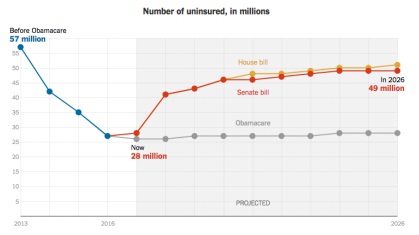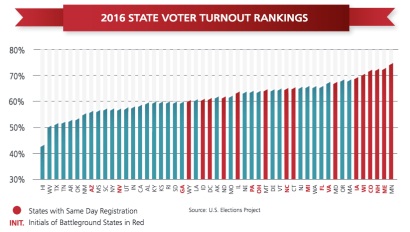Assignment:
1. Consider the new proposed law in Congress called the School Building Improvement Act that intends to stimulate school building quality and school infrastructure investment. Under the bill, $7 billion per year would be provided in formula funds to states for local competitive grants for school repair, renovation, and construction. School equity would be made a priority as states would focus assistance on communities with the greatest financial needs and ensure equitable access for public charter schools.
The basic structure is as follows. School districts with higher percentages of lowincome children, school districts with very poor-quality school facilities, and school districts with very high financial needs are the school districts that are given first priority for these matching grants. The size of the matching grant will take into account the relative poverty of the population of the school district (i.e., lower income
communities receive a higher matching rate than higher income communities).
a. Based on this structure, graphically explain how this matching grant program attempts to equalize the investment in capital expenditures across low-income (denoted Low in the graph) and high-income school districts (denoted High in the graph).
b. What would the education production function theory suggest about the effect of this program on student outcomes?
c. Based on the research of Neilson and Zimmerman (2014) and Conlin and Thompson (2015), explain what the research would suggest about the overall impacts of this program?
2. Use the data in the following figure on the projected number of uninsured individuals under the current Obamacare law vs. the previously proposed House and Senate health care plans to answer the following questions.

a. What are some of the rationales for why health policy should care about people becoming uninsured?
b. Explain how Obamacare was able to reduce the number of uninsured between 2013 and 2016.
c. Using the consumer-side model for health care utilization, graphically depict and explain what would likely happen to utilization of preventative medical care (for which people likely have very elastic demand) if individuals become uninsured.
d. Use the health effectiveness curve to explain the size of the societal cost of individuals losing health insurance coverage, in terms of reductions in health benefits.
e. Given the results of the RAND health insurance experiment and the results of the Medicaid (Finkelstein, et al., 2012) and Medicare studies (Card, Dobkin, and Maestas, 2008, 2009), what are the potential health implications of a switch from Obamacare to either the House or Senate's proposed plans?
3. Use the data in the following figure on state level voter turnout from the 2016 election to answer the following questions.

a. Use the voter-decision theory model to explain why we see higher turnout in states with same-day registration (i.e., voters can register on election day) and in states that are battleground states (i.e., states that could go either way on election day).
b. In January 2016 became the first state in the country to implement automatic voter registration. Under the new Oregon program, eligible
voters who have a qualifying interaction with the DMV are notified by mail that they will be added to the voter rolls, unless they decline registration or opt out within 21 days by returning a postcard to the state's election authorities.
i. Explain how this new law could have influenced the 4-percentage point increase in voter turnout between the 2012 and 2016 elections.
ii. 41% of voters registered through the program were between the ages of 18 and 29. Of individuals not registered through the program, only 13% of these voters were between the ages of 18 and 29. What implications might this type of law have for voting in college towns that have a lot of out-of-state students?
iii. In addition to the rise in turnout and the change in composition of those who voted, the program only saw 8% of individuals decide to opt out of the program. Given these findings, does this program appear to be an effective way to increase turnout? Why or why not?
c. Using ONE of the articles below, briefly discuss how voter ID laws or ballot placement laws impact the decision to vote. Explain the authors' main methodological approach, their main findings, and what their results imply about the impact of these types of laws on individuals' choices about voting.
i. Mycoff, Wagner, & Wilson (2009)
ii. Conlin, Melnik, & Thompson (2015)
4. Read the article, "A Tax Proposal that Could Lift Millions out of Poverty" and then answer the following questions:
a. Discuss the competing the three main considerations policymakers must consider when designing a welfare system, as they relate to the policy proposed in the article.
b. Graphically depict and explain how this type of policy might impact work decisions for childless workers.
c. Graphically depict and explain how this type of policy might impact consumption decisions for food vs. all other goods.
d. Given the results of the empirical research on the EITC, what would you expect to be the actual observed effect of this type of policy on the work decisions for childless workers? Do you think many individuals would maximize their earnings through the program? Why or why not?
5. Education policy can attempt to increase student achievement in one of two ways: (a) focusing on policy that outlines specific output targets or (b) focusing on policies that target enhancing inputs into the educational production function.
a. Discuss how policies that focus on inputs into the education production function can enhance student performance. In your response, briefly discuss what the results of Conlin and Thompson (2014), Krueger and Whitmore (2001), and/or Rockoff (2004) suggest about the validity of the education production function theory.
b. Discuss the approaches used by policy to directly target specific levels of output. What perverse incentives are created from these types of policies?
c. With the recent replacement of No Child Left Behind (NCLB) with the Every Student Succeeds Act (ESSA), states now have much greater control over the makeup of their school accountability system. Three particular improvements that states are attempting to make in these reforms are to ensure that these accountability systems:
(a) assign annual ratings to schools that are clear and intuitive to parents, educators, and the public;
(b) encourage schools to focus on all students, not just their low performers; and (c) fairly measure and judge all schools, including those
with high rates of poverty.
i. How might these changes eliminate come of the perverse incentives that were present under NCLB?
ii. How might better-designed accountability ratings allow parents to make better informed decisions about where to send their children to school?
6. Link one of the presentations given by your classmates to one of the theories or topics discussed in class. What does the empirical literature conclude about the given policy?
Readings:
A Tax Proposal That Could Lift Millions Out of Poverty
By The Atlantic, Gene B. Sperling, Oct. 17, 2017